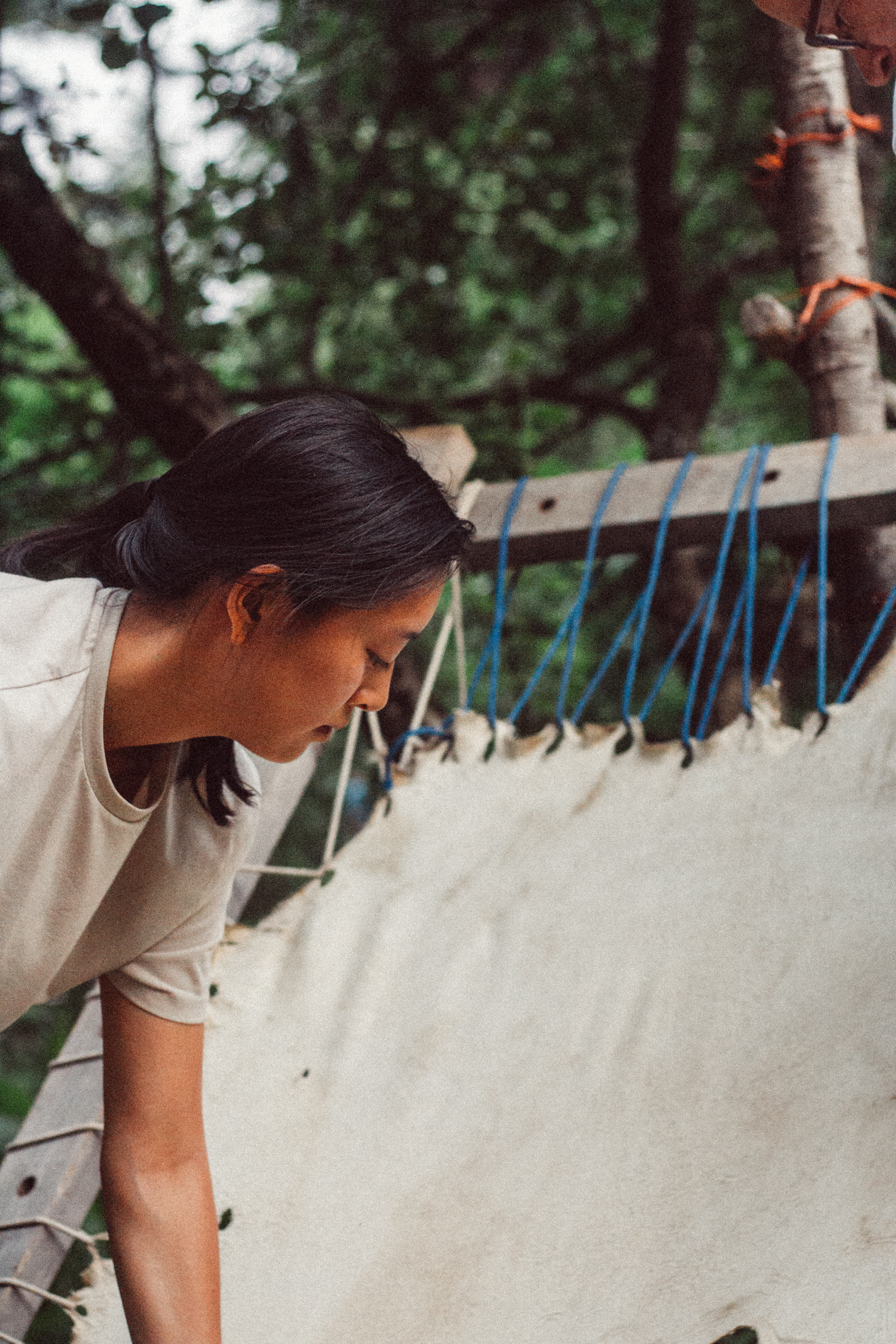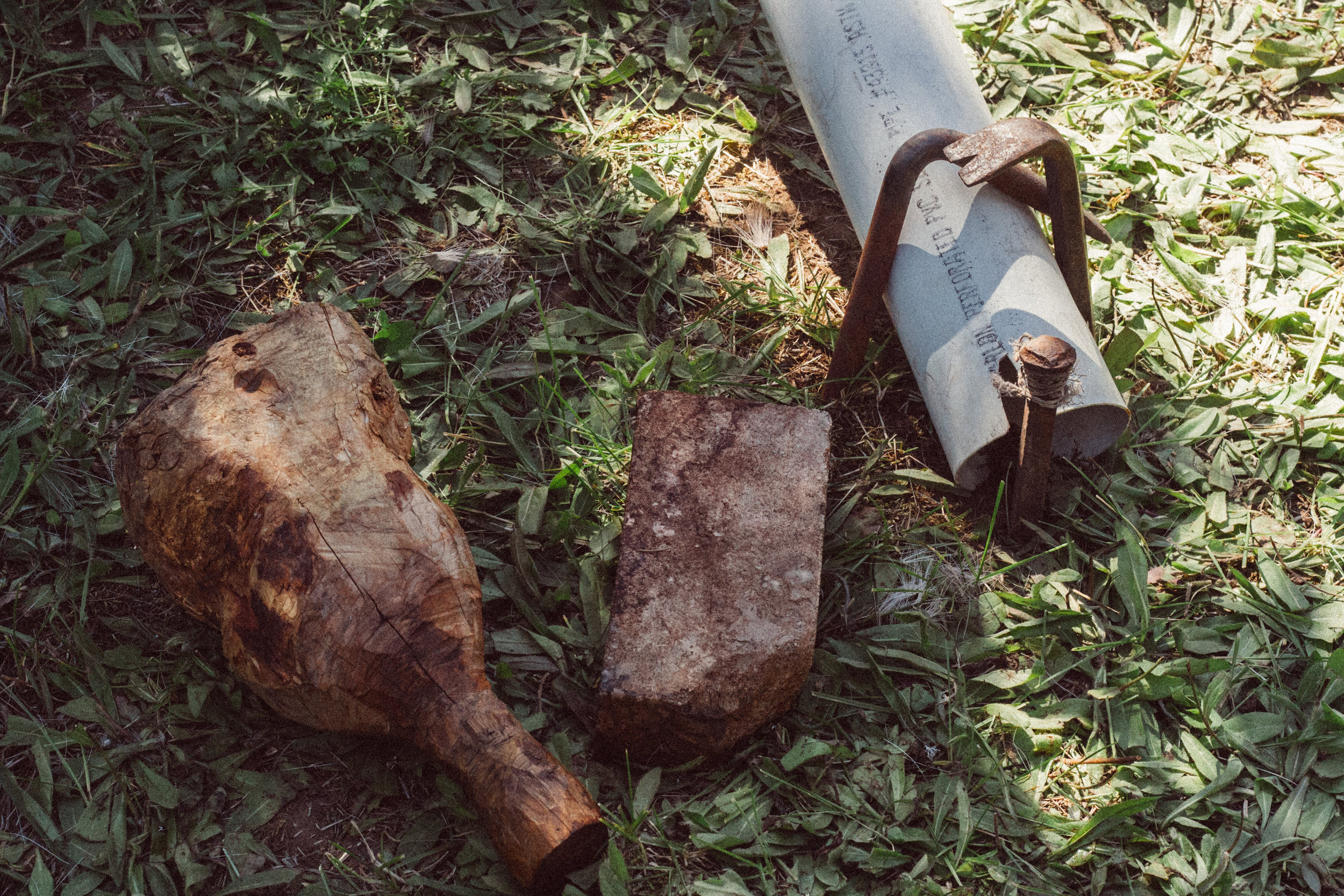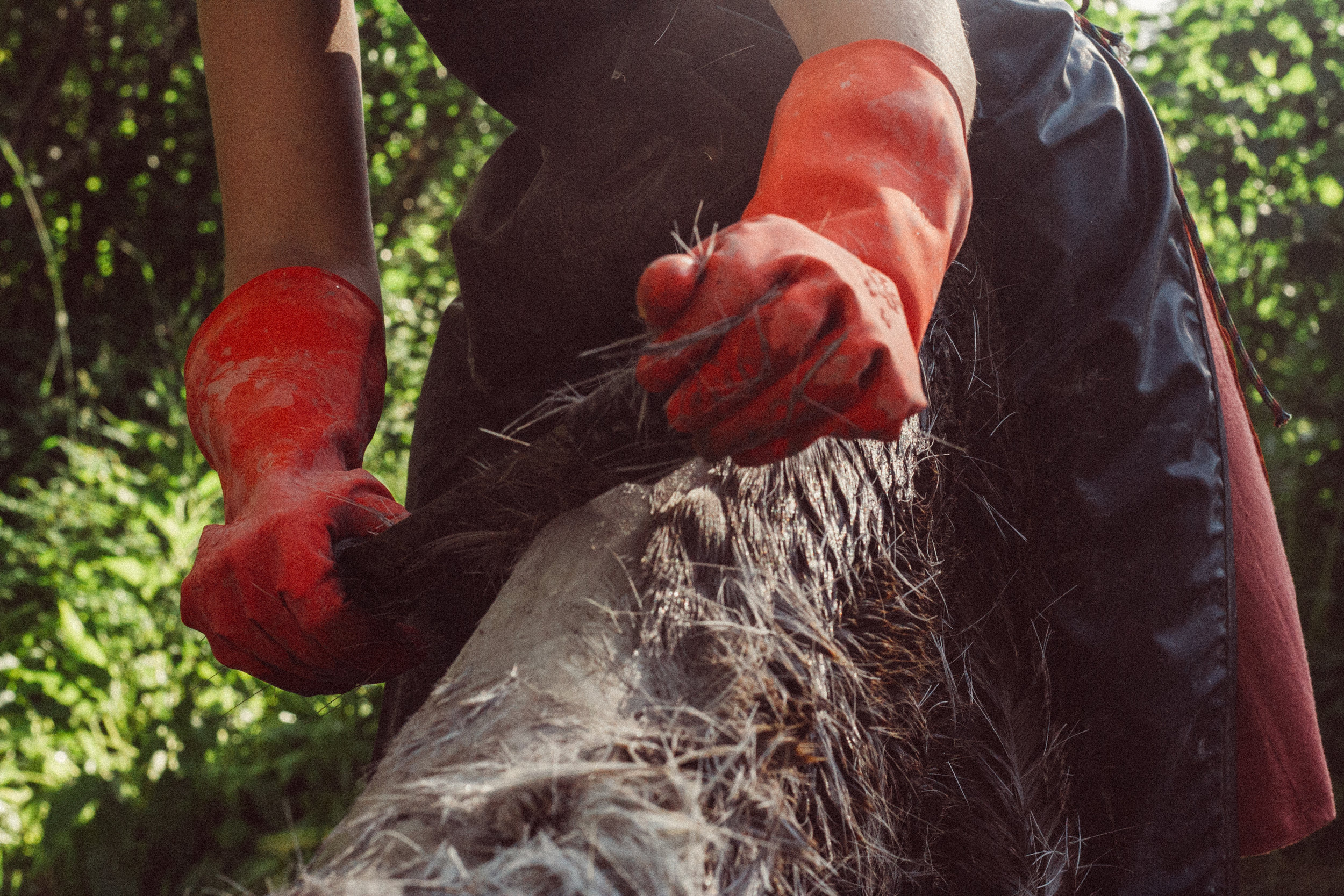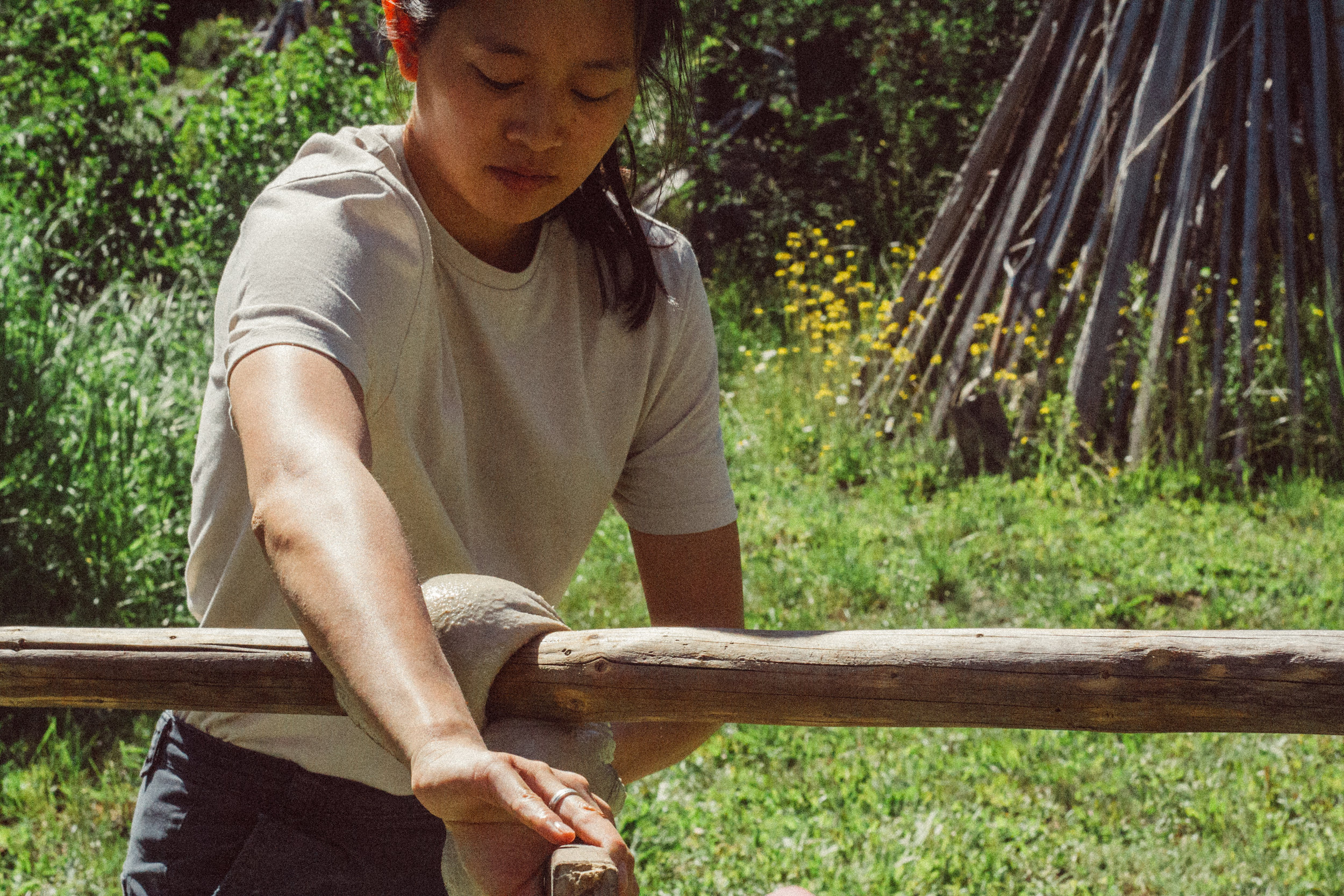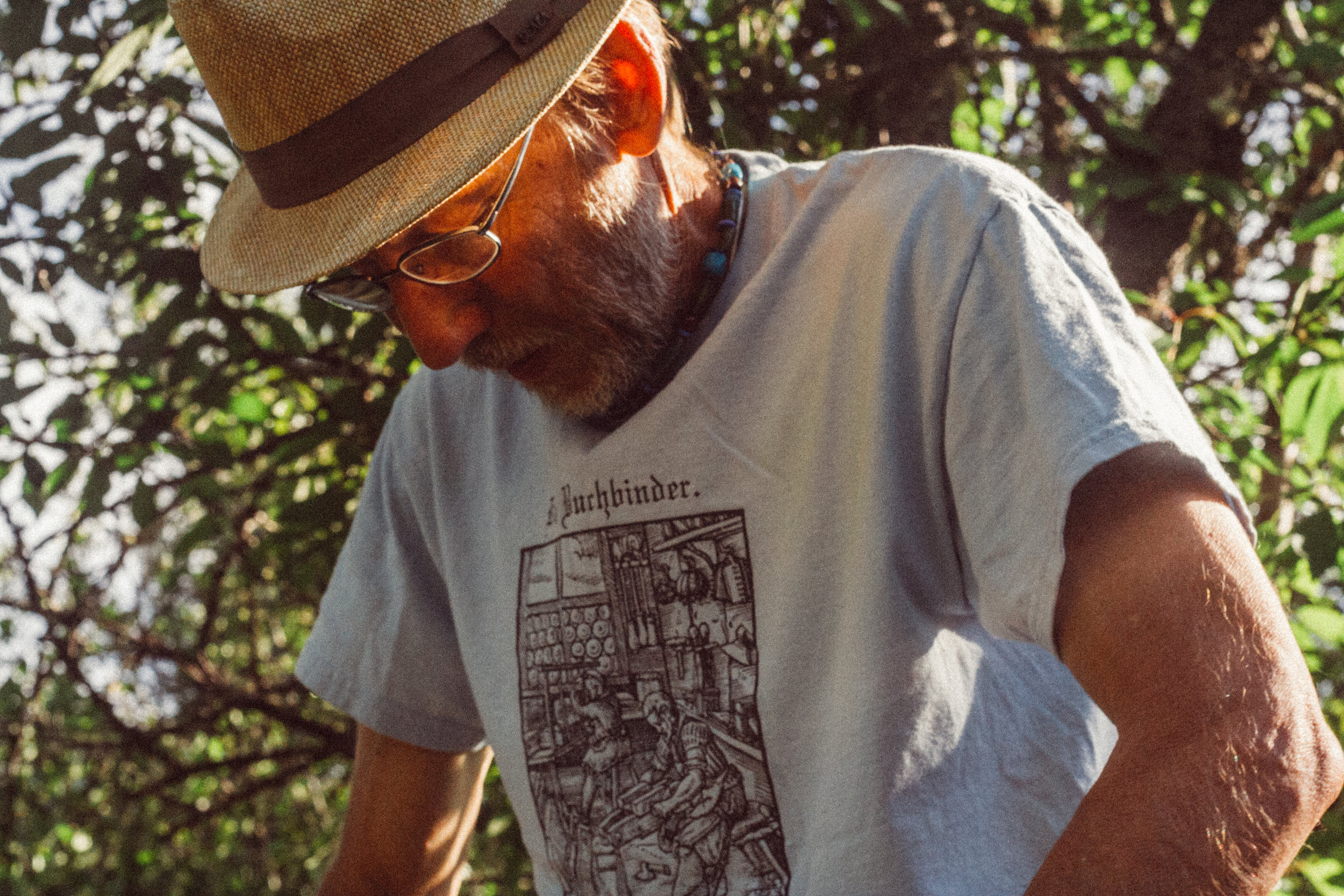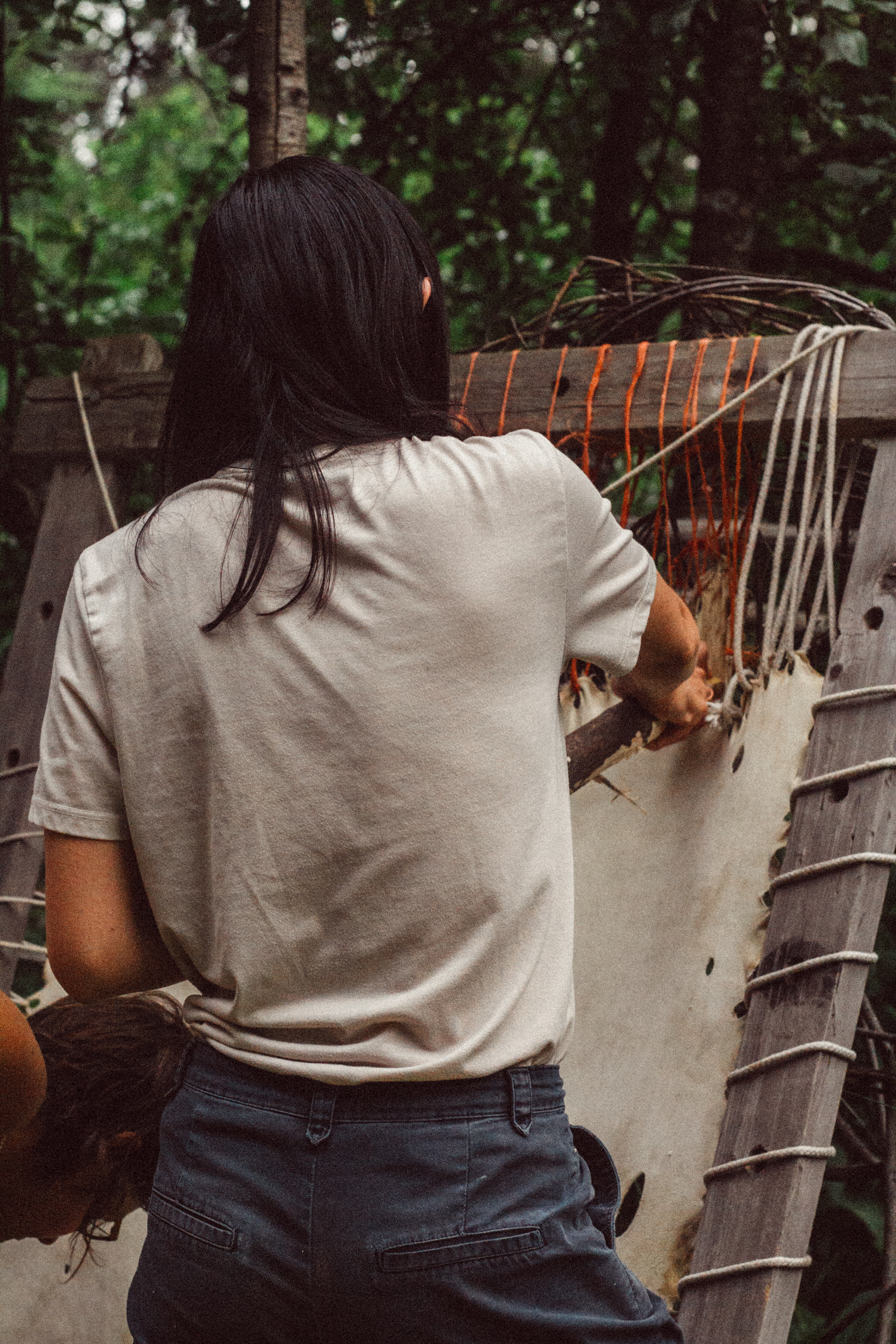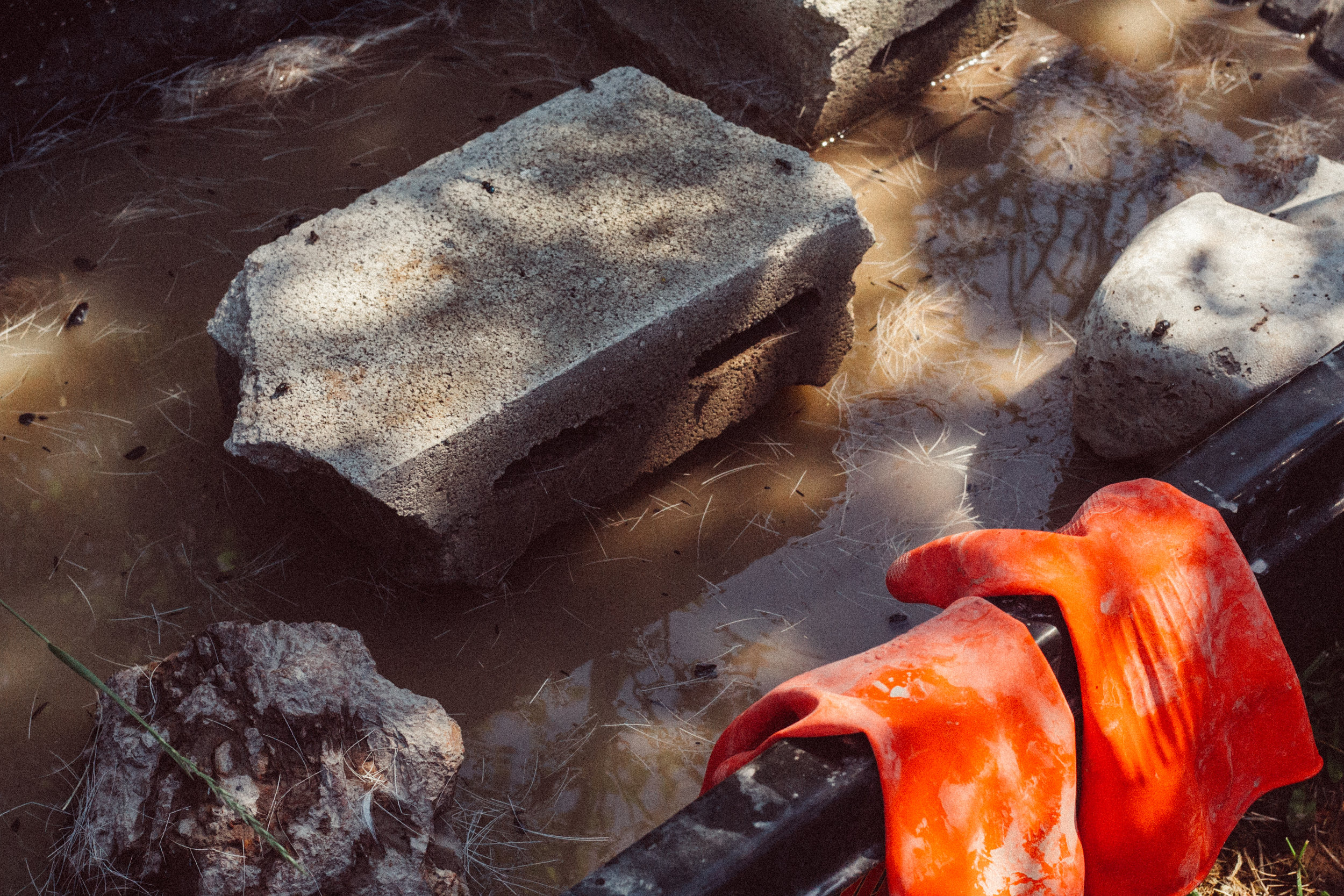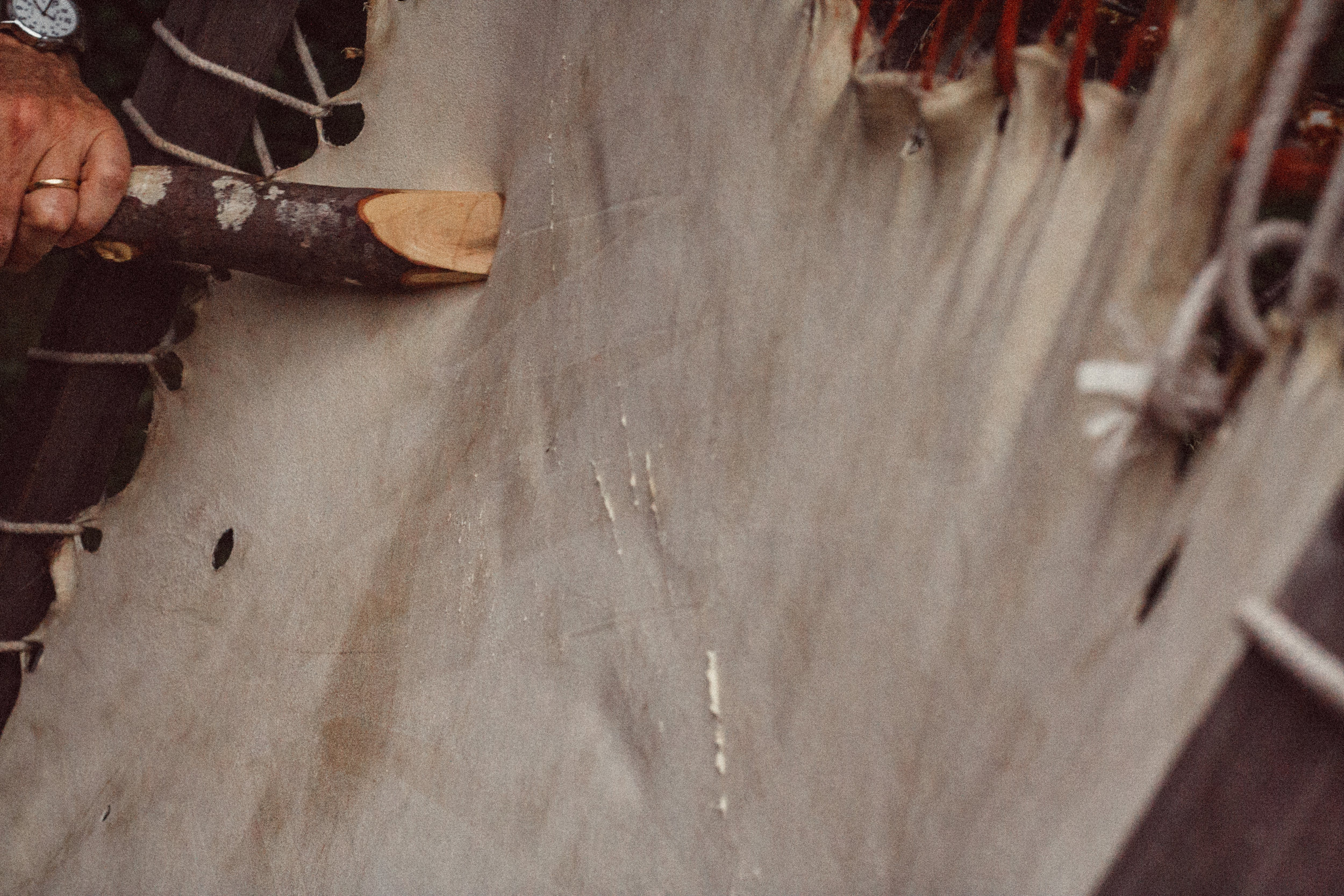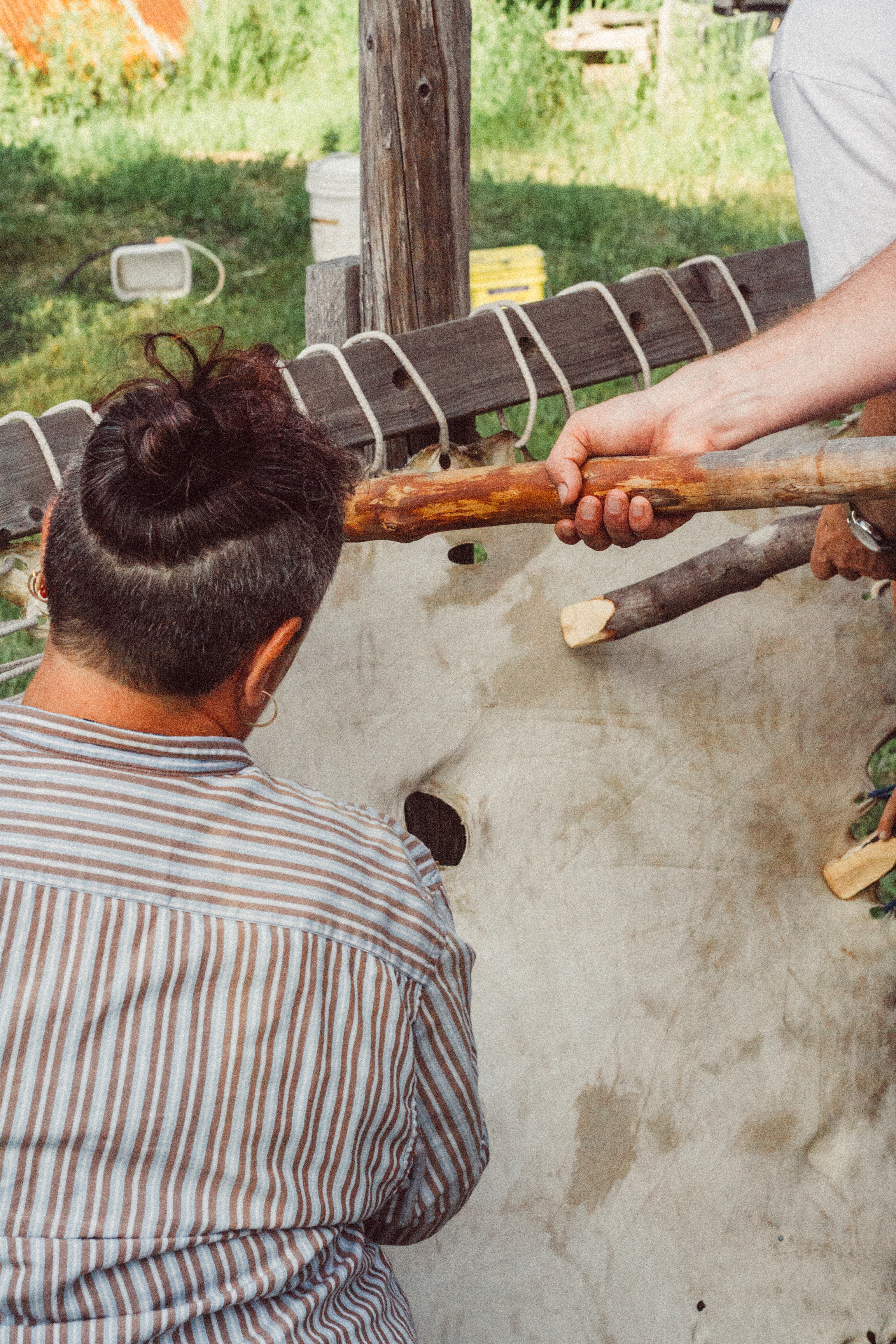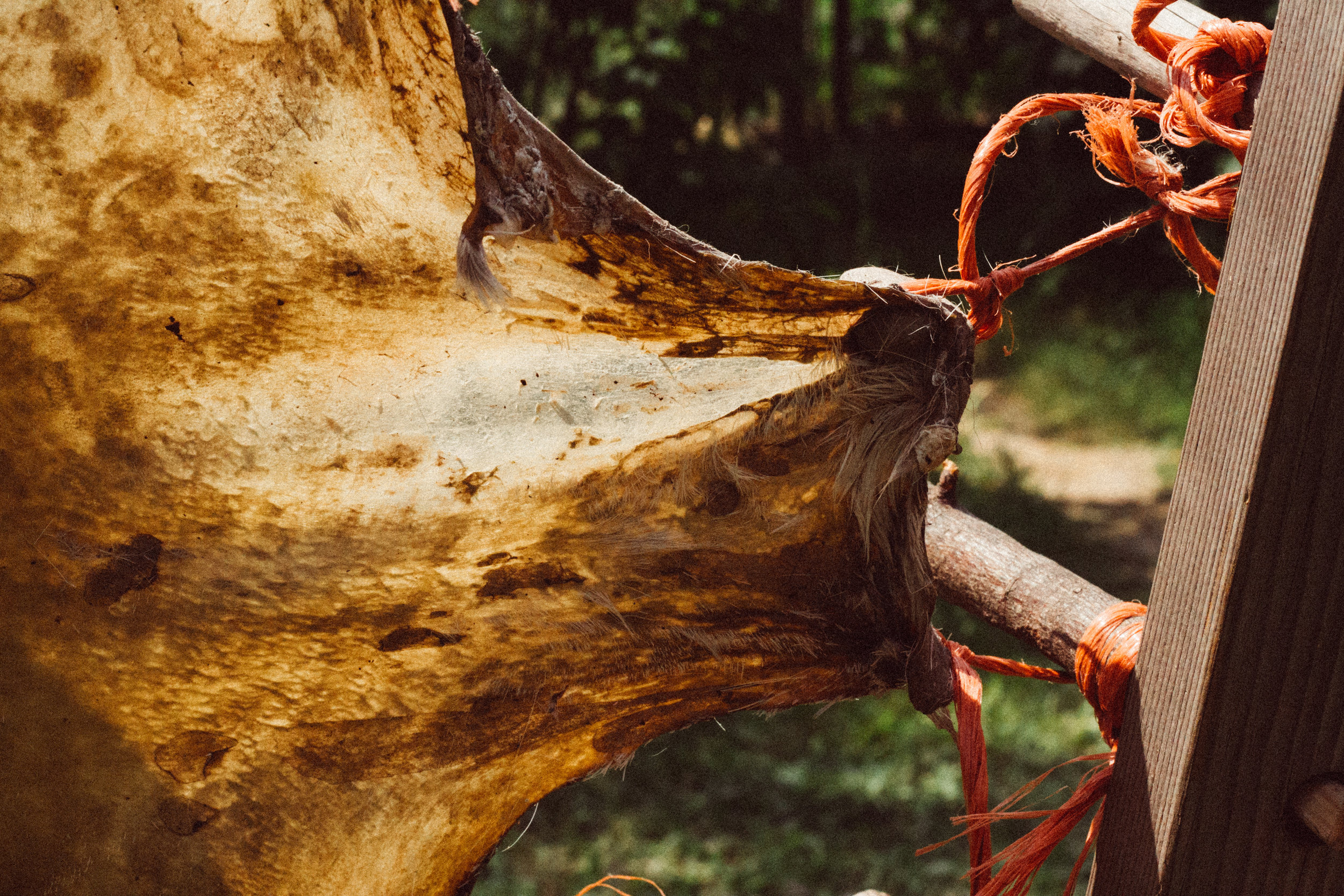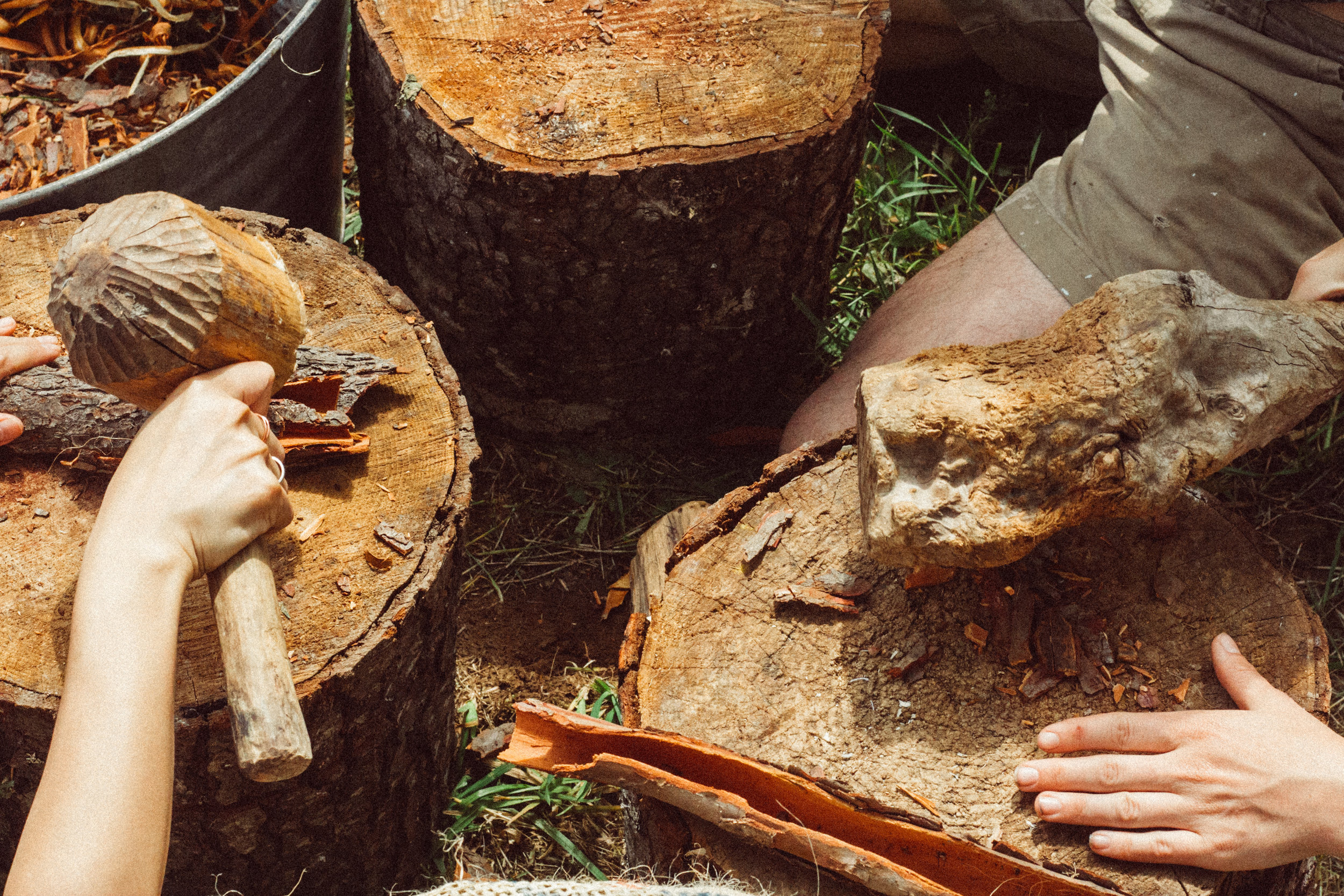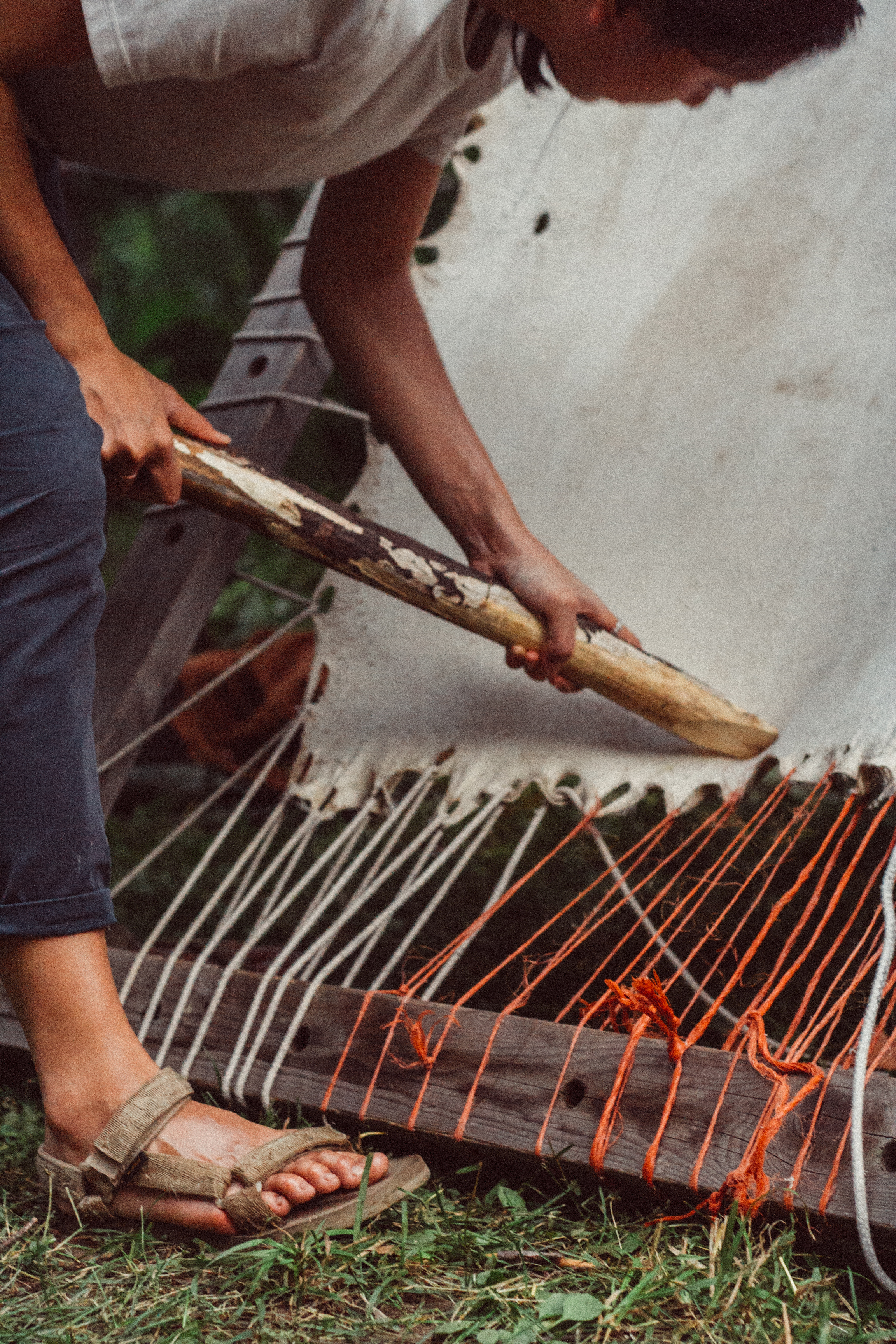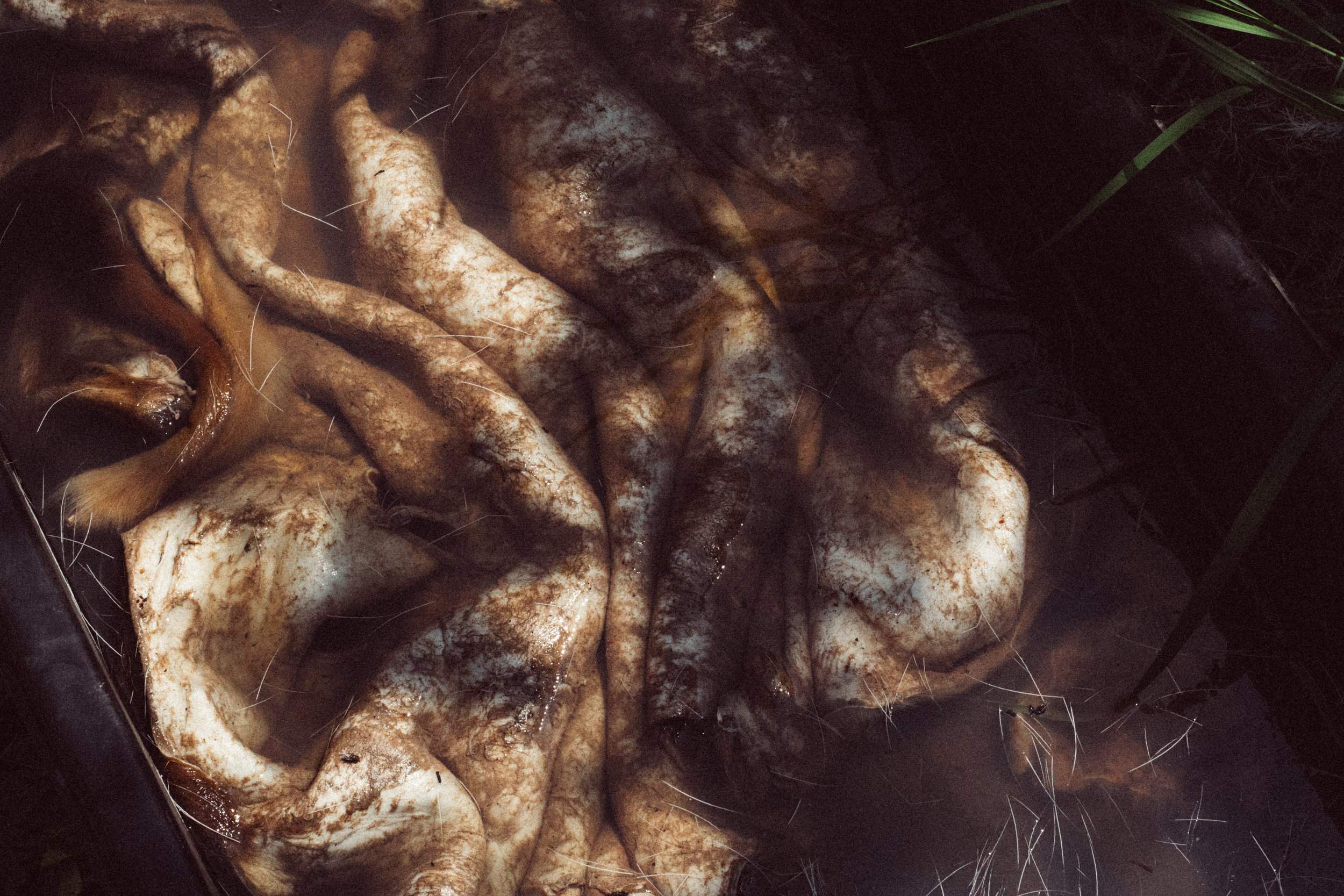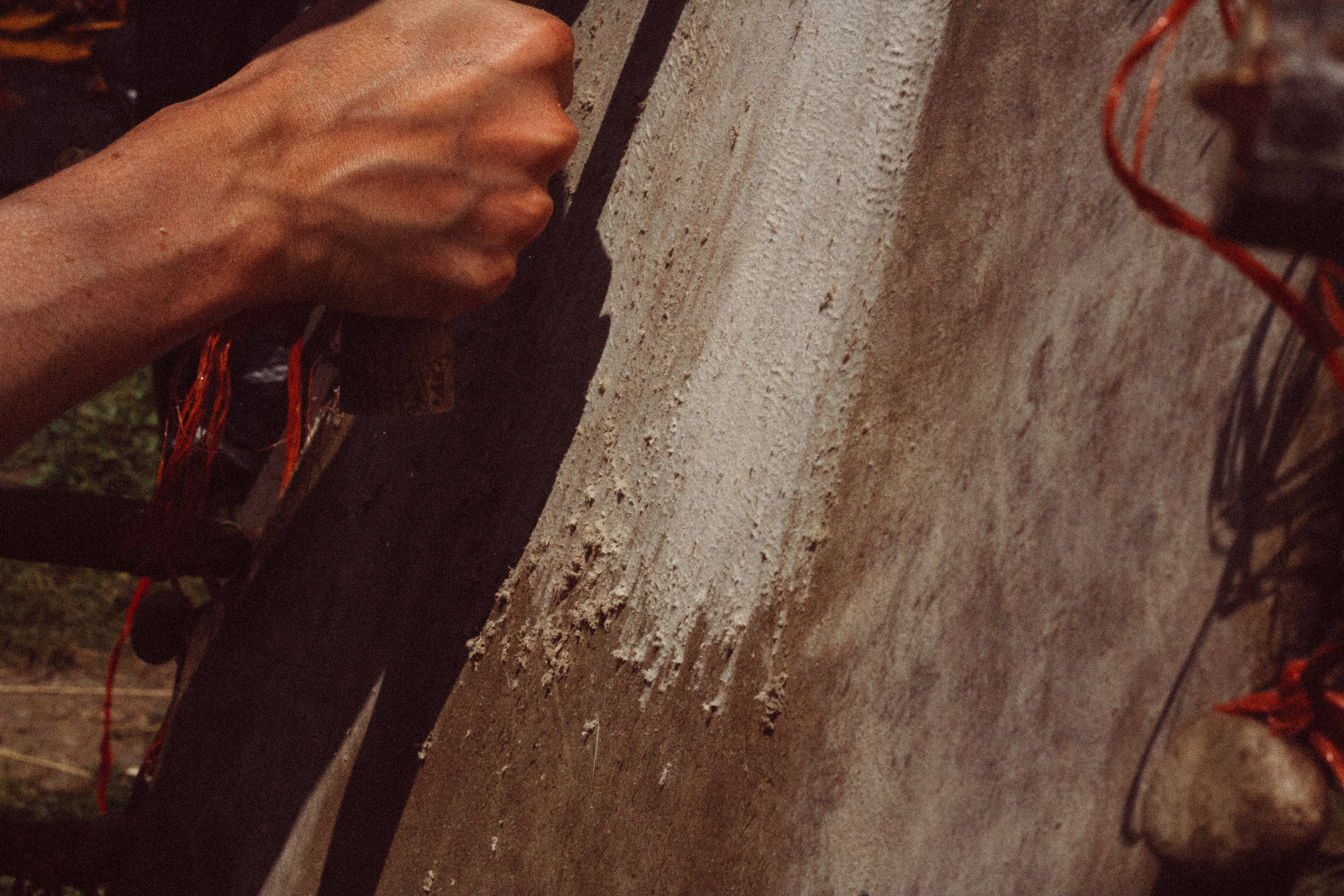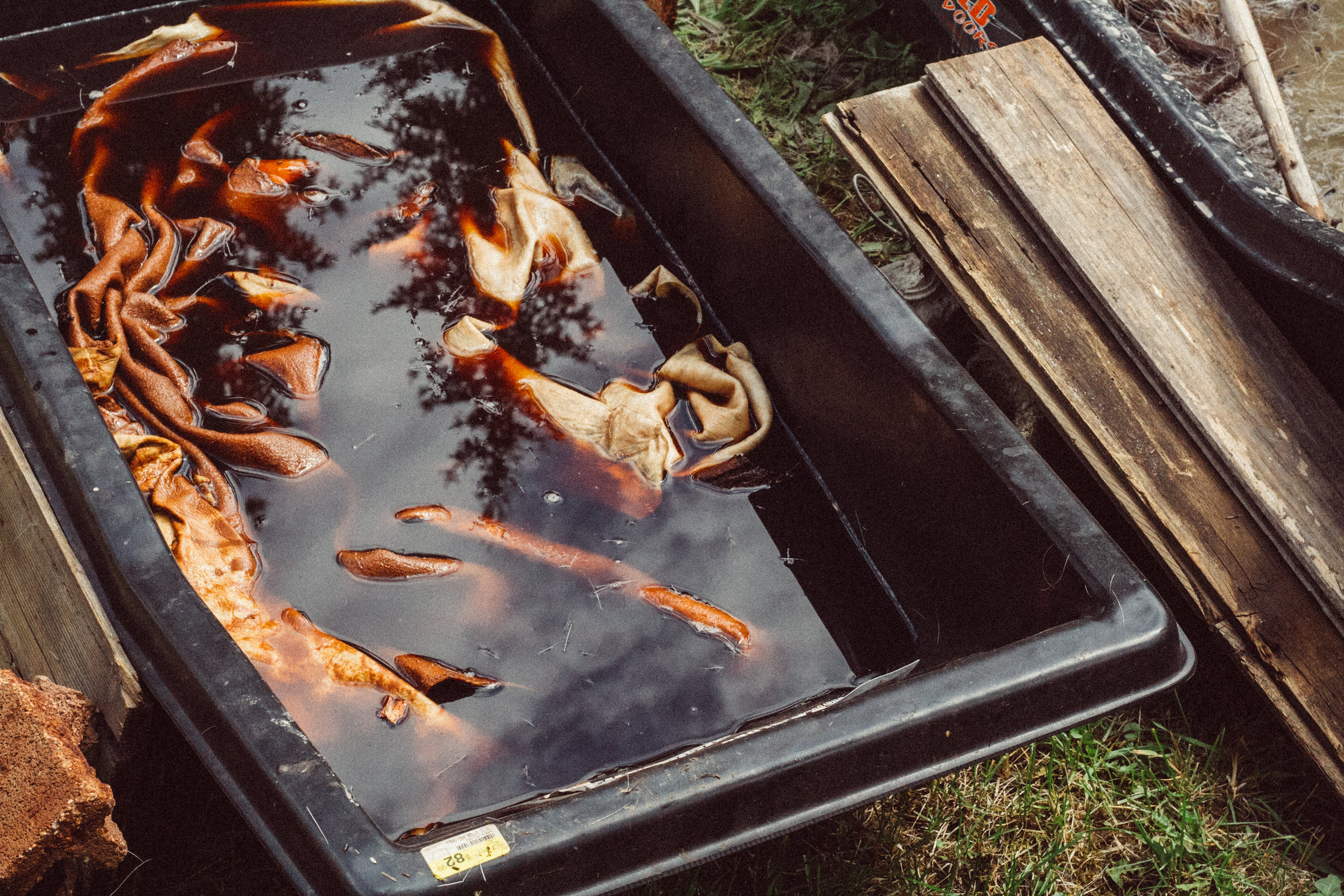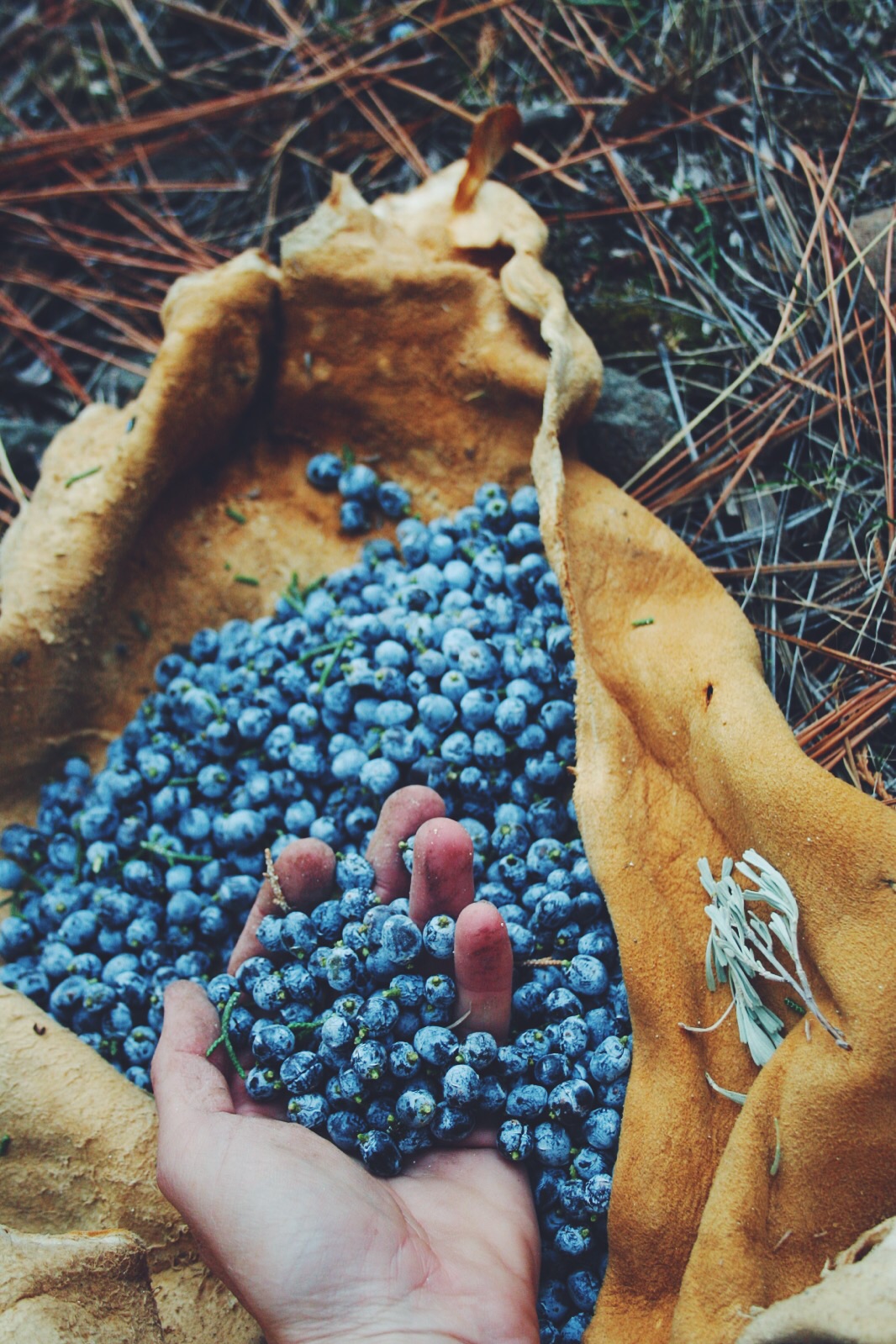hide tanning ///
This past summer, I taught hide tanning at Jim Croft’s ‘Old Ways of Making Books’ class. Jim is a medieval bookbinder who teaches how to make books from ‘the ground up’ in the old world European medieval style. I posted about this class a couple years ago on the blog, with a photo diary that you can find here.
Skins were an integral part of books at one time, and these days of mass industrial process practically absent of life, the use of skins in books is rare. If it is done, likely the books are made with commercially tanned leather using harmful chemicals. Natural tanning processes use brains, scrapers of bone or metal, smoke, tannins extracted from plant matter, water, wood. The process of transforming skins from the state right after an animal’s death to something that is preserved and filled with the lightness of a new form, is a magical one. This blog post features a few scenes from the tanning portion of the class, and I’ll be posting other parts of the class in more blog posts in the coming months.
I taught brain-tanning (we actually used egg yolks, since we couldn’t get ahold of brains!), bark-tanning leather using Hemlock bark from Jim and Melody’s land, hybrid techniques of brain-tan and bark-tan, and parchment making grain-on (though historically it was usually grain-off). We mainly tanned deer skins, but we did start a goat skin for bark-tanning that came from Adam’s herd who was also on the podcast last year. Listen to his episode, #10, ‘Adam and his goats’ here. The goat’s name was Bucky. We affectionately had names for each hide we were tanning to keep them all straight— like ‘Mr. Stiffy,’ ‘Mr. Softy,’ & Bucky.
Folks from the class took turns working the hides during the parts of the process that required scraping, wringing, and softening. We also harvested bark from a down Hemlock on the land, that fell during a windstorm only a few weeks before. The class helped pound the bark, gather firewood to boil the bark in a cauldron Jim made from a metal water tank cut in half, collect punk wood for smoking the hides, and more. The collective energy and enthusiasm around the tanning was exciting and added to the magic of the swirl of processes we were all juggling at once.
I released a podcast episode with Steven Edholm of Paleotechnics and Skillcult where we discuss in detail the process and philosophy of bark tanning leather. Listen here.
Despite our very busy schedule, everyone went away with buckskin, parchment and leather they could use in their books — and with the knowledge of how to do the process. I really believe that learning happens best through ‘doing’ and using our bodies to act out processes. That’s how we know the skills intuitively.
Why tan? Why get involved in skills like these? These skills bring us closer to the voice of the land, in better relationship to our involvement with death and the materials we use everyday.
Handling death throughout life too prepares us for our own eventual death, and gives us examples of how to honorably ‘let go' and really witness what it means to see something that has passed on transform to another form. Death is not an ending, but a new form of being.
Steven and I talk about this a bit in our Ground Shots Podcast conversation, linked above, or found anywhere you download your podcasts.
evening fires were spent telling stories while boiling bark for our bark-tan liqueur, and smoking hides.
cutting holes around a brain-tanned hide to string up on a frame to finish softening
Brenna around the fire
Alyssa from Ground Shots Podcast episode #22
wringing out a brain-tan
softening a fox pelt with a wire brush, pumice stone, sandpaper and egg yolks
the parchment being cut up
finished bark tanned leather and drawknife, one tool that can be used for harvesting bark for the tannin baths
sheepskin tanning on week 3
washing dirt and crud out of a sheepskin for tanning
evenings around the fire boiling bark and telling stories, drinking gin and tonics, spinning flax, carving spoons!
using a kind of dry-scrape tool to get membrane off of a sheepskin
sewing holes in a sheepskin getting it ready to smoke!
Brien softening our collective bark-tanned hide (started in a previous year!)
boiling bark/roasting bay nuts
knife sheath made from our collective bark-tan
a dog collar made from our bark tanned leather for Wren the dog!





















